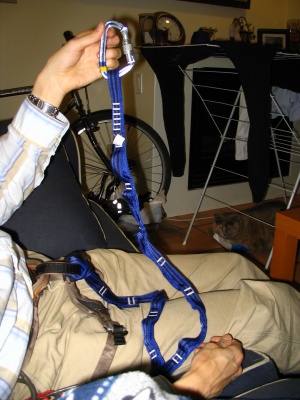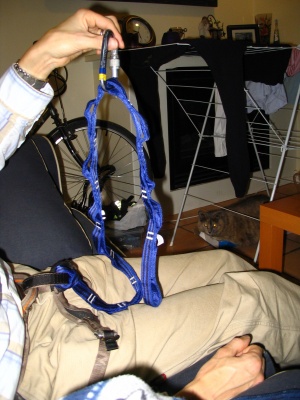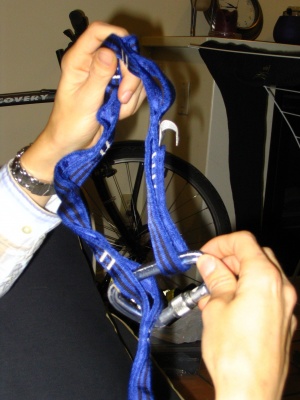Daisy Chain: Difference between revisions
imported>Swebster create page! |
imported>George m George moved page Daisy chain to Daisy Chain |
||
| (3 intermediate revisions by 2 users not shown) | |||
| Line 4: | Line 4: | ||
The additional stitching in the daisy chain that creates the pockets is not usually very strong. It is designed to hold body weight only, not forces that could be generated by a climbing fall. This means that some care must be taken in how the daisy is used to avoid problems caused by the possibility of broken stitching. In particular, it is very important that only one pocket is clipped, otherwise, even with small forces, the caribiner could become detached from the daisy. | The additional stitching in the daisy chain that creates the pockets is not usually very strong. It is designed to hold body weight only, not forces that could be generated by a climbing fall. This means that some care must be taken in how the daisy is used to avoid problems caused by the possibility of broken stitching. In particular, it is very important that only one pocket is clipped, otherwise, even with small forces, the caribiner could become detached from the daisy. | ||
The following images illustrate the above limitations. | The following images illustrate the above limitations. Click on the pictures to get a closer view. | ||
[[Image:Endclipped.jpg|thumb|left|A daisy chain attached to a climbing harness, with the end loop clipped. This is safe.]] | [[Image:Endclipped.jpg|thumb|left|A daisy chain attached to a climbing harness, with the end loop clipped. This is safe.]] | ||
[[Image:Pocketclipped.jpg|thumb|left|A daisy chain with a pocket clipped. This is generally safe, but it is possible that the pocket stitching will fail. This could continue to happen until the caribiner stops in the end loop, which is much stronger.]] | [[Image:Pocketclipped.jpg|thumb|left|A daisy chain with a pocket clipped. This is generally safe, but it is possible that the pocket stitching will fail. This could continue to happen until the caribiner stops in the end loop, which is much stronger.]] | ||
[[Image:Doubleclipped.jpg|thumb|left|A daisy chain with a caribiner clipped to two adjacent pockets. | [[Image:Doubleclipped.jpg|thumb|left|A daisy chain with a caribiner clipped to two adjacent pockets. <font color="red">'''This is very DANGEROUS'''</font>. If the stiching in the centre fails, the caribiner will not be attached.]] | ||
[[Image: | [[Image:Doubleclipped2.jpg|thumb|left|A daisy chain with a caribiner clipped to the end loop and one of the pockets. <font color="red">'''This is very DANGEROUS'''</font>. While it may not be entirely obvious, this is topologically similar to clipping to two adjacent pockets. If the pocket stitching fails between the end loop and the clipped pocket, the caribiner will be detached from the chain.]] | ||
<br style="clear: left"/> | <br style="clear: left"/> | ||
[[Category:Tips]] | |||
Latest revision as of 06:24, 27 January 2019
Introduction
A daisy chain is a piece of climbing equipment intended for use in aid climbing. It is a webbing sling that has additional stitching along its length that creates multiple pockets. By clipping one caribiner into the end of the daisy chain, and another into one of the pockets, the effective length of the daisy chain can be selected.
Limitations
The additional stitching in the daisy chain that creates the pockets is not usually very strong. It is designed to hold body weight only, not forces that could be generated by a climbing fall. This means that some care must be taken in how the daisy is used to avoid problems caused by the possibility of broken stitching. In particular, it is very important that only one pocket is clipped, otherwise, even with small forces, the caribiner could become detached from the daisy.
The following images illustrate the above limitations. Click on the pictures to get a closer view.



